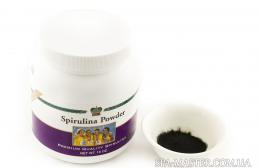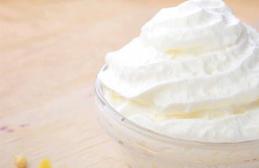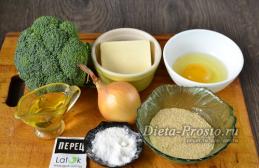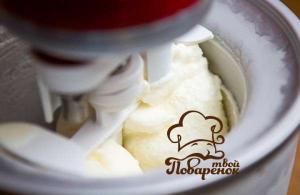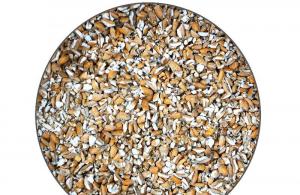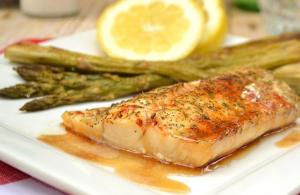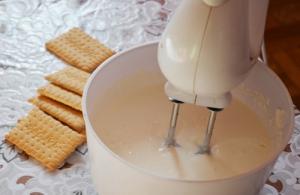Most often, mushrooms are consumed in pickled form, since they can be stored for a long time without losing the quality of taste. Each housewife has her own adapted recipe for pickled shiitake, but they are all based on two recipes.
Shiitake mushrooms have recently entered the diet of Europeans, but Asians have been eating them for many thousands of years. Moreover, these mushrooms are used in the East as part of many medicines that combat metabolic disorders and help protect against radioactive radiation.
In cooking they are used boiled, dried, baked and fried. Shiitake can be seen in such traditional oriental dishes as miso, futomaki and funchoza. These dishes are unusual in taste and require special ingredients, they are difficult to prepare at home, but connoisseurs of the rich taste of shiitake do not despair and use them as an addition to traditional salads, pasta or baked chicken breasts.

A quick way to pickle shiitake mushrooms
Marinated shiitakes prepared this way are an excellent appetizer for any table. The finished product can be served as a separate dish or as part of salads, sandwiches, and dressings.
For this recipe, small fresh or dried mushrooms are used. The semi-finished product can be stored for an unlimited amount of time in a hermetically sealed glass container. When preparing dishes, mushrooms are soaked in a small amount of warm water for half an hour.
Interestingly, dried shiitake mushrooms have a pleasant aroma and a more intense taste due to the increase in fiber.
For a quick method, you only need to marinate the mushroom caps. They are separated from the stem and boiled for five minutes in salted water with the addition of bay leaves, peppercorns, and coriander. During this time, a dressing is prepared from vegetable oil, a small amount of soy sauce, vinegar and mustard seeds. Shiitake mushrooms are poured with marinade for 40 minutes, after which the dish can be served. When serving, the appetizer is seasoned with garlic, finely chopped red onion and herbs. You should use cilantro and arugula with caution; these greens can spoil the taste of the dish.

Preserving pickled shiitake
Although mushrooms are available all year round, stored mushrooms are often found on supermarket shelves. But pickling shiitakes yourself will not be difficult, especially since they taste no worse than pickled milk mushrooms or even porcini mushrooms. For preparation, small mushroom caps are used, they are soaked for several minutes in salted water, and then boiled with the marinade for 10-15 minutes. The marinade contains vinegar, water, salt, bay leaf, and peppercorns. Before putting the preserves into jars, you must wait until the marinade has cooled. This will eliminate the possibility that the jar will burst due to a sudden temperature change. A prerequisite for preservation is heat treatment of the container, that is, the jars need to be calcined or sterilized for half an hour. Pickled shiitakes are laid out in pre-prepared jars, poured with the marinade in which they were cooked, a small amount of vegetable oil is poured on top, forming a protective film, and sealed with separately sterilized lids.
The finished preserve must be wrapped in a woolen blanket or any other fabric that retains heat well. This is important to do in order to slow down the cooling process. If the jars cool quickly, there may be a serious violation of the preservation technology, which can cause the contents to become moldy and the lid of the jar to swell. If this happens, under no circumstances should you re-roll the contents, even after boiling again. This method cannot be applied to mushrooms; they must be disposed of.

While the jars are cooling, you can use another secret. In order to make sure that the seals are sealed, the jars are turned upside down. Completely cooled seams are stored in a cool, dark place. If possible, storage in the refrigerator is encouraged. The shelf life is no more than one year, after which the taste of the contents may deteriorate slightly. This is due to the vegetable oil content in the canned food, which can go rancid.
This long-lasting appetizer is served after first rinsing the mushrooms from the marinade. Season with vegetable or olive oil, garlic and onions; if necessary, you can add a little vinegar. If canned shiitakes are soaked in boiled water for several hours, they can be used to prepare soups, stir-fries, and salads. They can also be fried with onions and carrots and used as a dressing.
Fried and stewed shiitake
Shiitake mushrooms can also be fried. The easiest option is to fry the caps and stems of mushrooms cut in half in vegetable oil. To do this, heat a frying pan with oil, add mushrooms and fry, stirring, until all the moisture from the mushrooms has evaporated. You can add carrots or peanuts to mushrooms - everyone decides for themselves, focusing on their taste. Fried mushrooms are often included in more complex dishes, but still characterized by the same high speed of preparation. You can combine roast mushrooms with meat, fish, seafood, vegetables, pasta. Mushrooms are distinguished by an unusual property: they are saturated with the taste of the ingredients with which they are cooked, but also retain their taste individuality.
You can stew oriental mushrooms in Russian style - in sour cream, this dish will remind you of boletus mushrooms in sour cream. Vegetarian pilaf with shiitake is also tasty; in this case, the mushrooms are very reminiscent of meat.
Pickled shiitake
You can also pickle shiitake. Ingredients of the marinade for 500 g of shiitake: 1 liter of water, 2 tbsp. l. salt, 5 - 7 clove buds, 4 - 5 dill umbrellas, 1, 2 tbsp. l. mustard seeds, 4 tbsp. l. white wine vinegar. Before marinating, mushrooms need to be boiled in 2 liters of water for about 15 minutes. Prepare a hot marinade, add mushrooms to it, cook them in it for 5 minutes and cool. Place the mushrooms in a container and close it. For long-term storage, roll the mushrooms covered in marinade into a pasteurized jar. You can try it in a week.
I discovered these mushrooms in Auchan, and immediately wanted to do something with them. There weren’t enough ingredients for Tom Yam soup, but there was everything for pickling. I stopped there.
To begin with, I threw the mushrooms into 2 liters of boiling water. Without defrosting. Boiled for about 15 minutes.

Drained through a colander and rinsed thoroughly under cold water.

Since the mushrooms had boiled down quite heavily, I only took half a liter of water for the brine. I threw in half a tablespoon of salt, a bay leaf, a pinch of allspice and cilantro seeds, as well as heels of clove buds.

I also sent thin strips of garlic and ginger there.

I didn’t miss the opportunity to add dry adjika. I'm nowhere without her.

The mushrooms went into the brine last and were cooked after boiling for about 5 minutes, no more.

I transfer the contents of the pan into a jar. Everything fit into a 700 gram container. Pour apple cider vinegar on top. Here, in my opinion, grape would be more suitable, but I used what I had. We close the jar with a lid and send it to the balcony to cool.

Here she is, my dear, she moved into the refrigerator. Marinated shiitake mushrooms, according to recipes from the Internet, can be tasted after a few days, although in Tom Yam these mushrooms are cooked for just a few minutes. I couldn’t resist and tasted these shiitakes. Cool! I wish you the same. Bon appetit.

One last piece of advice. Since salt and tablespoons are different, do not be afraid to change the composition of the brine in the jar with mushrooms. I had to drain the brine a little and add boiled water. Do the same with all spices.
Cooking time: PT00H40M 40 min.
Today, probably everyone has heard the word “shiitake,” even those who are not into oriental cuisines. These mushrooms are increasingly appearing in supermarkets, and if you are not an avid mushroom picker, then getting hold of shiitake mushrooms is easier for you than boletus or porcini mushrooms. Many have already tried shiitake out of curiosity and were disappointed - the mushroom is like a mushroom, and we grow better. Indeed, in appearance, shiitakes do not excite admiration - small dark brown mushrooms on a dense stem with a rounded cap turned inward. And the taste is nothing supernatural. Why do Japanese gourmets love them so much? It turns out that everything is not just like that.
 Shiitake, or black Chinese mushrooms as Europeans call them, are the first mushrooms that humans began to grow, and not just collect. Whether this was necessary for survival in harsh conditions or whether everything was started just for the sake of regular supplies of delicious mushrooms for the imperial table is now difficult to say, but it is known for sure that the technology for growing shiitake was developed already in the 10th century AD. In China and Japan, these mushrooms were grown on the logs of castanopsis - the shii tree (from which, in fact, the name “shiitake” came), maintaining the necessary humidity and temperature.
Shiitake, or black Chinese mushrooms as Europeans call them, are the first mushrooms that humans began to grow, and not just collect. Whether this was necessary for survival in harsh conditions or whether everything was started just for the sake of regular supplies of delicious mushrooms for the imperial table is now difficult to say, but it is known for sure that the technology for growing shiitake was developed already in the 10th century AD. In China and Japan, these mushrooms were grown on the logs of castanopsis - the shii tree (from which, in fact, the name “shiitake” came), maintaining the necessary humidity and temperature.
Chinese healers, having studied the effects of these mushrooms on humans, came to the conclusion that they help with respiratory diseases, cleanse the liver, stimulate blood circulation, slow down aging, eliminate weakness and fatigue, and generally increase vital energy qi.
 Shiitake mushrooms are, of course, useful, but no more so than all other mushrooms. There is no point in attributing miraculous properties to shiitakes bought in the supermarket. And here’s why: in fact, there are several cultures of these mushrooms, and only special “medicinal” shiitakes that are as close as possible to wild ones are used for the needs of pharmacology and cosmetology. They have a pronounced bitter taste and look rather unappetizing - thin long legs, almost transparent caps. In Japan they are called "donko shiitake". Those dense and appetizing shiitakes that are grown and sold everywhere today were bred by American breeders at the end of the 20th century. Naturally, the selection was aimed at taste and yield; there was no talk of preserving beneficial properties. But as often happens, the fame of medicinal shiitakes automatically transferred to their relatives, which is successfully exploited by unscrupulous sellers, saying that their shiitakes “cure everything.”
Shiitake mushrooms are, of course, useful, but no more so than all other mushrooms. There is no point in attributing miraculous properties to shiitakes bought in the supermarket. And here’s why: in fact, there are several cultures of these mushrooms, and only special “medicinal” shiitakes that are as close as possible to wild ones are used for the needs of pharmacology and cosmetology. They have a pronounced bitter taste and look rather unappetizing - thin long legs, almost transparent caps. In Japan they are called "donko shiitake". Those dense and appetizing shiitakes that are grown and sold everywhere today were bred by American breeders at the end of the 20th century. Naturally, the selection was aimed at taste and yield; there was no talk of preserving beneficial properties. But as often happens, the fame of medicinal shiitakes automatically transferred to their relatives, which is successfully exploited by unscrupulous sellers, saying that their shiitakes “cure everything.”
Of course, with regular consumption of shiitake in large quantities, we can talk about strengthening the immune system, increasing potency, purifying the blood and preventing the growth of tumors, because the delicacy forms of shiitake also contain useful substances (polysaccharide letninan, amino acids, fatty acids, vitamin D), but they Most of them are destroyed even with short heating. Therefore, noodles or pizza with shiitake, which sometimes appear on our table, are simply tasty and satisfying dishes, but by no means a medicine.
 Let us no longer focus on the dubious beneficial properties of shiitake, because these are very tasty and aromatic mushrooms, if you know how to handle them, of course. You can use them to prepare many delicacies of Chinese, Japanese, Vietnamese, Korean, Thai and other Asian cuisines, or you can do it simpler and replace them with champignons or other mushrooms that you usually use in your kitchen. Start your shiitake experience with fresh mushrooms. The most delicious are those that have a pattern of cracks in the hat in the form of flowers or snowflakes.
Let us no longer focus on the dubious beneficial properties of shiitake, because these are very tasty and aromatic mushrooms, if you know how to handle them, of course. You can use them to prepare many delicacies of Chinese, Japanese, Vietnamese, Korean, Thai and other Asian cuisines, or you can do it simpler and replace them with champignons or other mushrooms that you usually use in your kitchen. Start your shiitake experience with fresh mushrooms. The most delicious are those that have a pattern of cracks in the hat in the form of flowers or snowflakes.
In Japanese cuisine, shiitake is often used to make broths and is added to miso soup. In Thailand, shiitake is steamed or fried. In Chinese cuisine, these mushrooms are used to prepare the ancient dish Buddha's delight, a favorite delicacy of Buddhist monks, which there is no way to repeat in Russia, since in addition to shiitake it will require bamboo sprouts, lily buds, gingko nuts and more. a dozen exotic ingredients.
 To get maximum benefits, you can eat shiitake raw, but this is not to everyone's taste. The easiest way to prepare fresh shiitake is to quickly fry it in oil with salt and garlic and serve it with rice, stewed or fresh vegetables. If you stew shiitake in sour cream, as in traditional Russian recipes for boletus mushrooms, you will get a completely complete dish with a slightly unusual, but pleasant taste.
To get maximum benefits, you can eat shiitake raw, but this is not to everyone's taste. The easiest way to prepare fresh shiitake is to quickly fry it in oil with salt and garlic and serve it with rice, stewed or fresh vegetables. If you stew shiitake in sour cream, as in traditional Russian recipes for boletus mushrooms, you will get a completely complete dish with a slightly unusual, but pleasant taste.
You can also boil the shiitake in a small amount of water just a few minutes after boiling. Don't forget to add salt; garlic and dill seeds will come in handy. After 2-3 minutes of simmering over low heat, turn off the heat and leave the mushrooms to steep under the lid. Cooking fresh shiitakes should not be long, otherwise you will end up with a rubbery substance without taste or aroma. You can make a delicious and aromatic soup using broth.
 If the shiitakes are dried, they should be soaked first. The rough, tough legs are usually discarded, although they can be eaten if desired. You can simply leave dried shiitakes in water overnight, or you can prepare a gorgeous marinade that will transform the mushrooms beyond recognition. To do this, mix sesame oil with soy sauce, add crushed garlic, lemon juice, pepper and your other favorite spices. You can stew mushrooms in the same marinade, or you can serve it as a sauce for the finished dish.
If the shiitakes are dried, they should be soaked first. The rough, tough legs are usually discarded, although they can be eaten if desired. You can simply leave dried shiitakes in water overnight, or you can prepare a gorgeous marinade that will transform the mushrooms beyond recognition. To do this, mix sesame oil with soy sauce, add crushed garlic, lemon juice, pepper and your other favorite spices. You can stew mushrooms in the same marinade, or you can serve it as a sauce for the finished dish.
Recipes with shiitake
Ingredients:
500 g fresh shiitake,
2 tbsp. salt,
2 tbsp. mustard seeds,
5-7 whole cloves,
4-5 dill umbrellas,
1 bay leaf,
4 tbsp. white wine vinegar.
 Preparation:
Preparation:
Unscrew the stems of the mushrooms and rinse the caps thoroughly. Boil 2 liters of water in a saucepan and cook the caps for 15 minutes. Meanwhile, prepare the marinade in another saucepan - boil a liter of water and add all the other ingredients. Place the boiled mushrooms into the boiling marinade and cook there for 5 minutes. Sterilize a jar (1.5 liters), transfer the mushrooms into it, fill it with marinade, and roll up the lid. If you do not plan long-term storage, you can put the mushrooms with the marinade in a plastic container. The mushrooms are ready in 3 days, or better yet, in a week.
You can boil shiitake legs in the broth and make soup with it.
Shiitake chips
Cut large fresh shiitakes into slices, salt and sprinkle with your favorite spices. Heat the oil for deep frying and prepare a simple batter. Dip each plate into batter and fry until golden brown. Dry the finished chips on a paper towel.

Ingredients:
10-12 dried shiitakes,
2 cups short grain rice,
3 carrots,
1 onion,
3 tbsp. vegetable oil,
salt and spices (cumin, barberry, turmeric, coriander, savory, sage, marjoram) - to taste.
Preparation:
Rinse the mushrooms and soak in cool water (3 cups) for 2-3 hours. Pour the water into a wok or thick-walled pan and bring to a boil. Meanwhile, cut the carrots into thin slices, the onion into half rings and the soaked mushrooms into slices. In the same sequence, place into boiling water and bring to a boil again. Add oil, salt, spices, stir and cover with a lid. Cook on high heat for 3 minutes, then on low for another 10 minutes. Remove from heat and leave for another 10 minutes, then stir and serve.

Ingredients:
250 g fresh shiitake,
100 g peanuts,
50 g butter,
1 clove of garlic,
salt, pepper, thyme, parsley - to taste.
Preparation:
Roast the peanuts until brownish and remove the husks. Cut the mushrooms into thin slices, add finely chopped garlic and fry in butter for several minutes. Add salt, spices, peanuts, mix thoroughly and leave on low heat for 1-2 minutes. Shiitake with peanuts can be served as a separate dish or with a side dish of rice and herbs.
Olga Borodina

